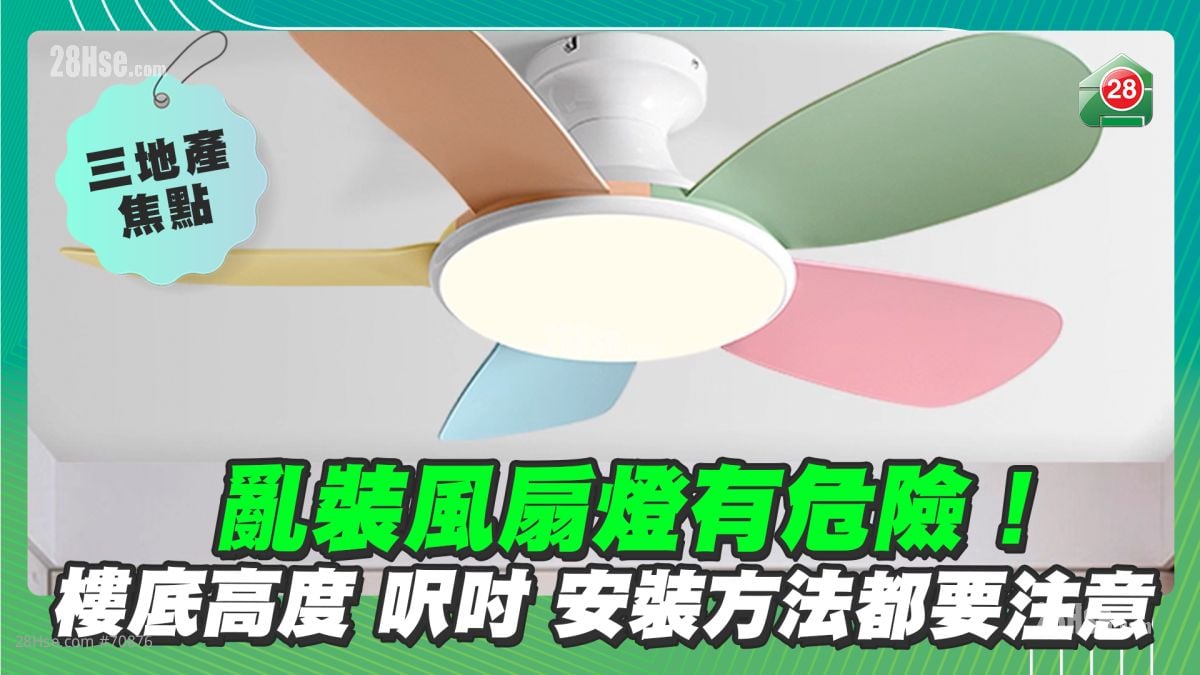For small living spaces, even finding room for a fan can be a challenge. To save space, many people opt for fan lights, which are both stylish and practical. Fan lights have become a popular home choice in recent yearbut what should you keep in mind when buying and installing them?
When choosing a ceiling fan light, it is crucial to ensure that your ceiling height is suitable. If the ceiling is too low, the fan blades may be within arm’s reach, creating a safety hazard.
How high should the ceiling be? Fan lights come in various styles, including bladeless models, models with blades, and those with retractable blades. For bladeless fan lights, the distance between the fan blades and the floor should be at least 2.4 meters (around eight feet). For fan lights with blades or retractable blades, a higher ceiling is necessary. Additionally, there should be at least one meter of clearance between the fan blades and any nearby walls or beams.
Fan light motors generally come in two types: AC (alternating current) and DC (direct current). AC motors provide stronger airflow and are more affordable, but they tend to be noisier and consume more energy. DC motors, on the other hand, are quieter and more energy-efficient, though they produce less airflow overall.
It is also important to choose the right fan light size for your space. For rooms under 50 square feet, a 32-inch fan light is ideal. For spaces between 50 to 75 square feet, a 42-inch model works better, while rooms between 75 to 100 square feet are best suited for a 48-inch fan light.
Safety is a critical factor when buying and installing a ceiling fan light. Many people attempt to save money by purchasing fan lights online and installing them themselves, but this can be extremely dangerous. Installation should always be carried out by a professional technician. The technician will inspect the ceiling's electrical setup and load capacity to ensure that the existing circuits can handle the additional equipment.
They will also assess the ceiling type and use the appropriate mounting methods to minimise the risk of the fan light falling. For instance, concrete ceilings require expansion bolts, while false ceilings may need reinforcement with threaded rods. The final method will depend on the technician’s evaluation of the site.
When purchasing a fan light, ensure that the product has the necessary safety certifications. In Hong Kong, the CE mark is the most common certification, signifying compliance with European safety standards and the Electrical and Mechanical Services Department's requirements. This helps reduce the risk of accidents and ensures safer use.
Fan lights, which combine lighting and ventilation, are undoubtedly convenient and practical. However, it is essential not to focus solely on their appearance while neglecting safety and functionality. Since fan lights are installed on the ceiling, it is also a good idea to keep a sturdy ladder at home for cleaning and maintenance. By following these considerations, you can enjoy the benefits of a fan light while ensuring it is both safe and efficient for your living space.
Like

